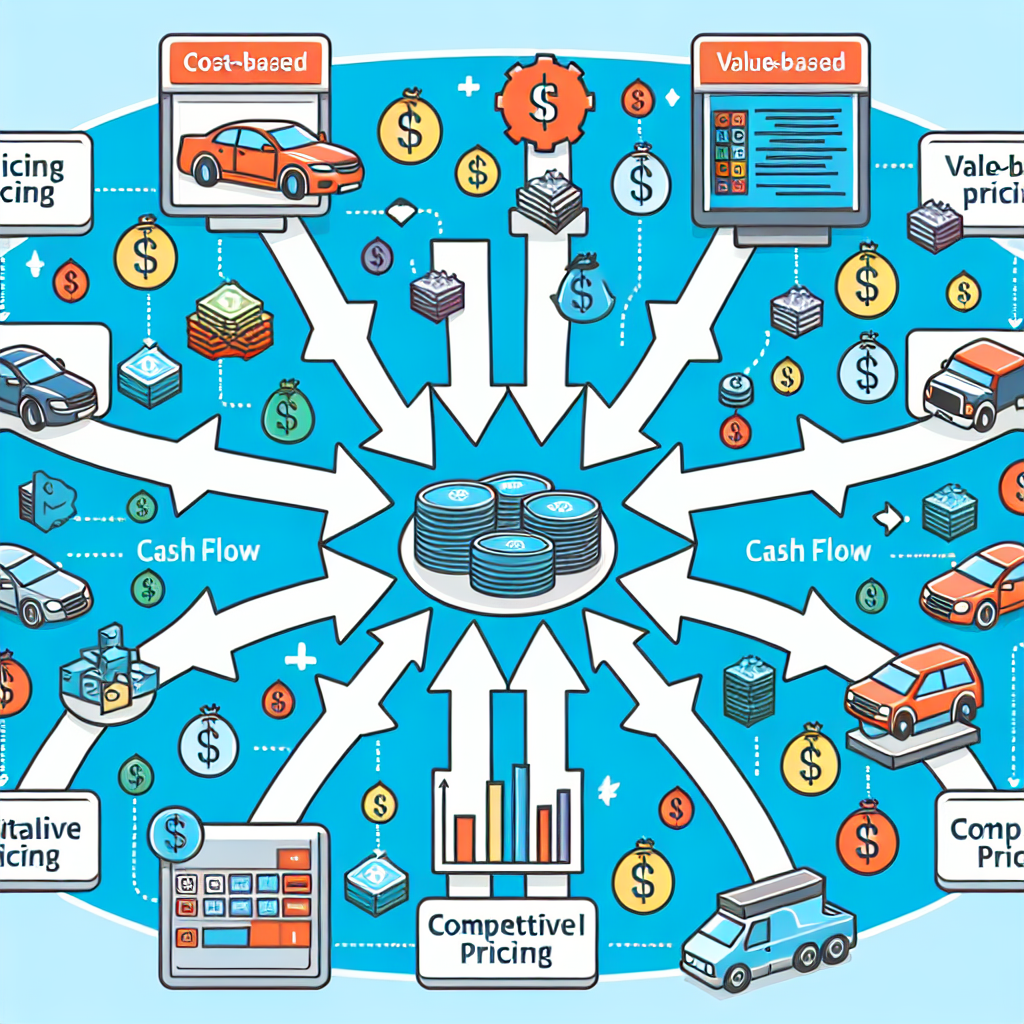Understanding Your Cost Structure
Identifying Fixed and Variable Costs
When I first dipped my toes into the auto detailing business, I realized that understanding my cost structure was of utmost importance. Fixed costs, like rent for a garage or equipment purchases, are expenses that don’t really change month to month. On the other hand, variable costs, such as cleaning supplies or labor, will fluctuate based on how many cars I detail each month. Knowing the difference between these two types of costs is essential because it lays the groundwork for setting my pricing strategy.
I recommend making a detailed list of both fixed and variable costs, even diving deep into the nitty-gritty elements like electricity usage and marketing expenses. It might seem tedious at first, but trust me, it pays off. Once you’ve got a clearer picture, organizing these expenses helps you understand how much revenue you need to generate to break even.
In my experience, having a thorough grasp of your costs makes it much easier to set prices that not only cover these expenses but also leave room for profit. After all, pricing just below your costs could be a surefire way of running your business into the ground, and nobody wants that, right?
Calculating Break-Even Point
Next up is calculating your break-even point. This is a huge one! Knowing how many details I need to perform just to cover my costs can be a real eye-opener. The break-even point shows me, in simple terms, the sales volume necessary before I start making real money.
Creating a break-even analysis involves determining my total fixed costs and dividing that figure by the contribution margin (which is the selling price minus variable costs per service). Once I figured this out, it was such a relief! Whenever I felt a dip in cash flow, I could look back at this analysis to see where I stood and adjust accordingly.
With the break-even point in hand, I could then strategize. For instance, if it looked like I needed to detail 20 cars a month just to break even, I could figure out how to market my services better, increase prices, or even look for ways to cut costs. This simple analysis became a cornerstone for making smarter pricing decisions.
Factors Influencing Pricing Strategy
Pricing isn’t just about covering costs—so many factors play into it! Things like market demand, competition, and customer perception are crucial. For example, if demand for auto detailing is high during the summer months, I’ve found it beneficial to slightly increase my prices then. It’s basic supply and demand, and I learned to use this to my advantage.
I also keep an eye on what my competitors are charging. If they’re offering similar services at lower prices, it might prompt me to reassess my service offerings or focus on providing extras that justify my higher prices. Understanding the market position helps me remain competitive while also valuing the hard work that goes into each detailing job.
Lastly, customer perception is everything. If my clients think I offer top-notch services, they are more willing to pay a premium price. I’ve found that investing in good branding and showcasing customer testimonials can significantly influence how customers view my pricing—making them feel confident in scheduling their details without hesitation.
Implementing Dynamic Pricing
Adjusting Prices Based on Demand
An interesting thing I’ve adopted in my business is dynamic pricing. This essentially means adjusting my prices in real time based on demand. For example, I’m more likely to charge a premium price during peak hours or busy seasons. When I notice that my schedule is filling up quickly, it’s the perfect opportunity to review my pricing.
Dynamic pricing allows me to maximize profits without losing customers. Some customers might be willing to pay more for urgent services, especially if they need their car detailed before an important event. I find it helpful to communicate these price changes so clients understand why they’re being charged a bit more—for instance, a shiny car before, let’s say, a wedding!
Experimenting with this strategy has been pretty successful for me. It requires staying on top of trends and learning to anticipate customer needs, but the results are worth it. I encourage anyone in the detailing biz to try out this pricing method and see how it can elevate cash flow.
Offering Tiered Pricing Options
Speaking of maximizing profits, I can’t stress enough the value of tiered pricing! This has played a significant role in my business. By offering different packages—ranging from a basic wash to full detailing—I cater to more clients with varying budgets. This way, I’m not just trapping myself into one price point.
I’ve learned that not every customer wants the top-of-the-line service. Some might just want a quick clean but are happy to pay for a little extra on top of that. However, others might value the experience more and want the full treatment. Having those options makes my business accessible while also boosting my revenue.
Implementing this strategy has also encouraged customers to upgrade. Once they see what’s included in a higher-tier package, they might think—“You know what? That sounds great!” And just like that, I’ve not only improved cash flow but also customer satisfaction. Win-win!
Monitoring and Adjusting Regularly
Now, let’s face it: a pricing strategy isn’t set in stone. It’s essential to keep an ongoing review of how things are going. For me, having regular reviews helps catch potential cash flow issues before they spiral out of control. It lets me see which services are performing well and which aren’t pulling their weight.
Utilizing customer feedback has been invaluable as well. If I notice my clients repeatedly mention a certain service as too pricey, I take that to heart and reassess. Regular adjustments based on customer feedback make my prices more competitive, keeping my clients happy while keeping my pockets a little fuller too.
Tracking trends over time—like seasonality and sales spikes—has also enhanced my approach. I’ve started to adjust prices accordingly, ensuring that I’m never left caught off guard by a downturn in business. I can guarantee you that the periodic evaluation keeps my business thriving!
The Importance of Communication
Explaining Your Pricing Model to Customers
Alright, here’s a biggie that many business owners overlook: communication. It’s crucial to clearly explain your pricing model to clients. Transparency builds trust, and when clients understand what they’re paying for, they’re much more likely to come back for repeat business.
Illustrating what each service entails and why it costs what it does removes ambiguity. For me, it’s as simple as detailing the quality of products I use or the time involved in completing each service. I even share with them the certifications or training my team has gone through. It makes a difference, trust me!
Clients appreciate knowing they’re getting value. And guess what? They’re more inclined to market your services through word of mouth. A little clarity in pricing goes a long way in cultivating a loyal customer base.
Addressing Customer Concerns
Sometimes, customers have concerns about prices, especially if they view an increase. Honestly, who doesn’t get a little sticker shock from time to time? To tackle this, I make it a point to listen to their concerns and address them head-on. A thread of open communication can lead to understanding and sometimes even great tips on how to refine my offerings further.
If they express a concern regarding a service’s cost, I invite them to share their feedback, and it often leads to fruitful discussions. Sometimes it’s less about the price and more about what they expect from the service. Addressing these hesitations shows that I care about their experience and satisfaction.
This engagement leads to a better understanding between me and my clientele and fosters an ongoing relationship based on trust. Moreover, a solid relationship can pave the way for a customer to accept a price increase down the line, especially if they’ve previously enjoyed the services I offer.
Promoting Pricing Changes Effectively
Now, when it comes to promoting any price changes, it’s best to do it tactfully. I always prioritize communicating any adjustments to my existing clients ahead of time. I’ve found that sending a simple email, highlighting the value of my services, and why prices are changing, can go a long way in easing concerns.
Social media is another excellent tool to reach both existing and potential customers. By promoting my new pricing structures there, I can appeal to new clients and keep everyone in the loop. Throughout this process, showing the added value or enhancements I’ve made to my services has been super helpful in justifying the price changes.
The bottom line is that proactively managing pricing communications helps maintain my credibility while ensuring my cash flow remains stable. Regularly engaging with my clientele keeps them informed, and in return, they support my business through their continued patronage!
FAQ
1. What is the most critical factor to consider when setting prices in auto detailing?
The most critical factor is understanding your cost structure. Knowing your fixed and variable costs will help you set prices that allow for profitability while remaining competitive.
2. How can I determine my break-even point?
To find your break-even point, divide your total fixed costs by the contribution margin (price per service minus variable costs). This will give you an estimate of how many services you need to sell to cover costs.
3. What is dynamic pricing, and how can it help my business?
Dynamic pricing allows you to adjust your service prices based on demand. It can help you maximize profits, especially during peak times or busy seasons.
4. How often should I review my pricing strategy?
I recommend reviewing your pricing strategy regularly, perhaps quarterly, to keep track of any trends, customer feedback, and changes in your costs or services offered.
5. How should I communicate pricing changes to my customers?
It’s best to communicate changes transparently through emails or social media, explaining the reasons for the adjustments and the value that customers will continue to receive.



